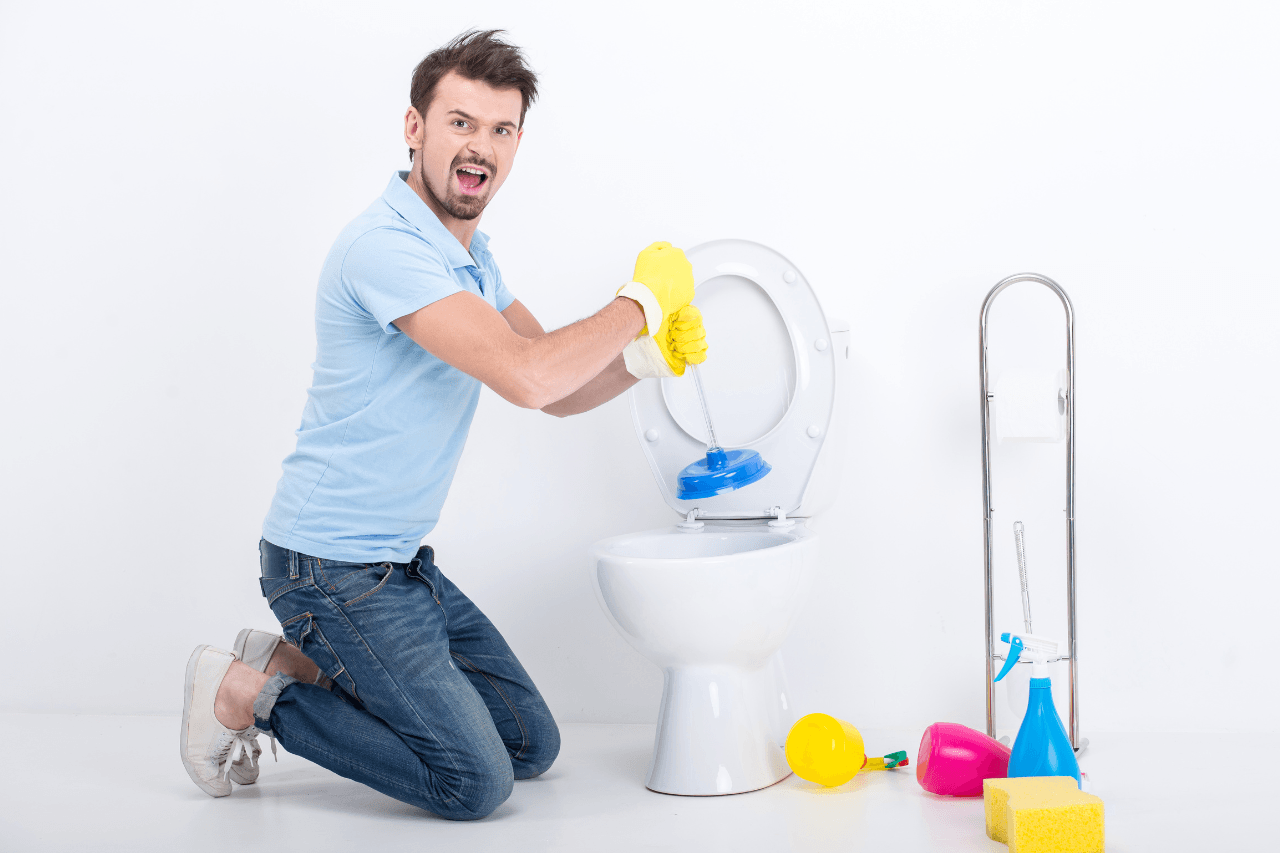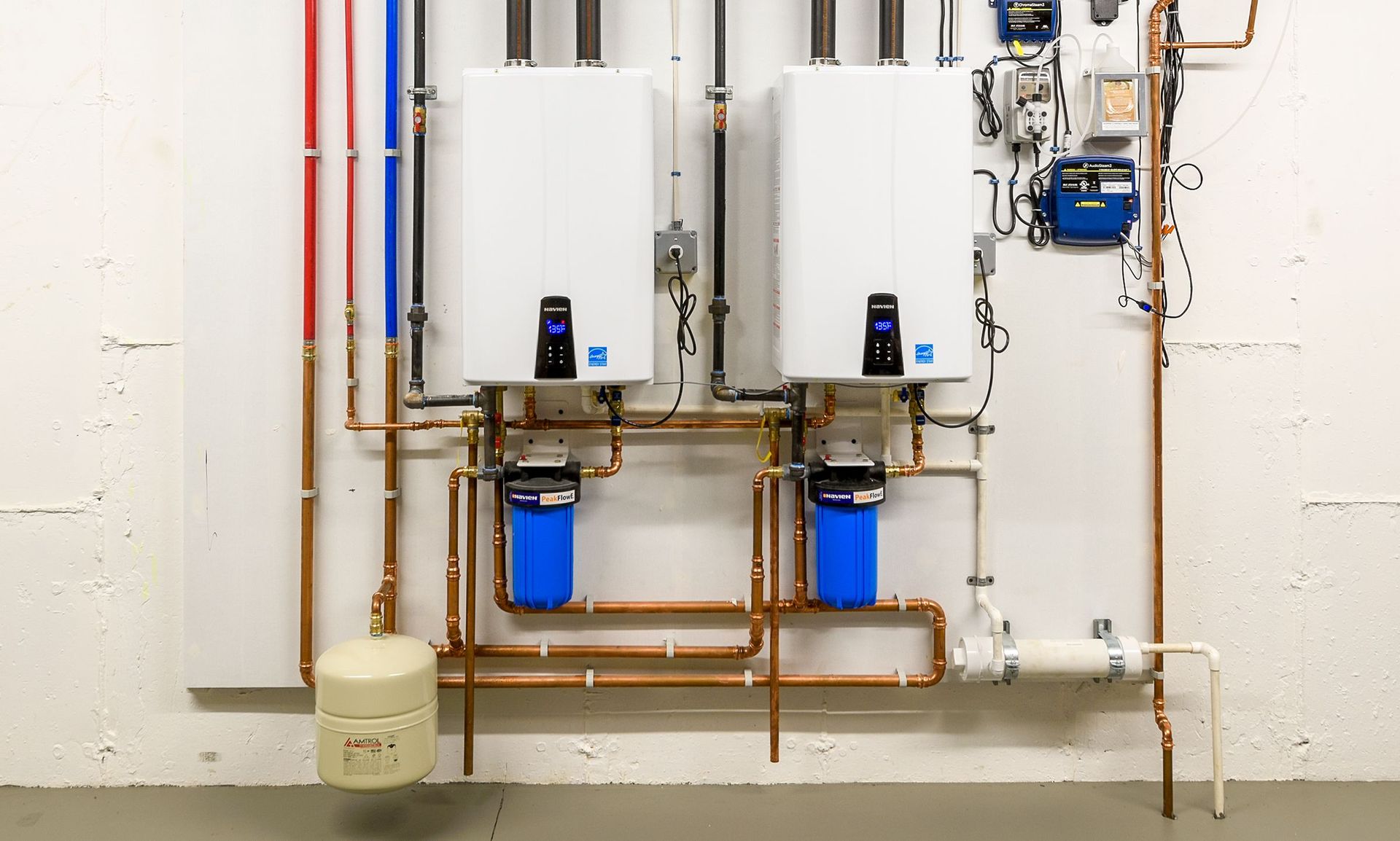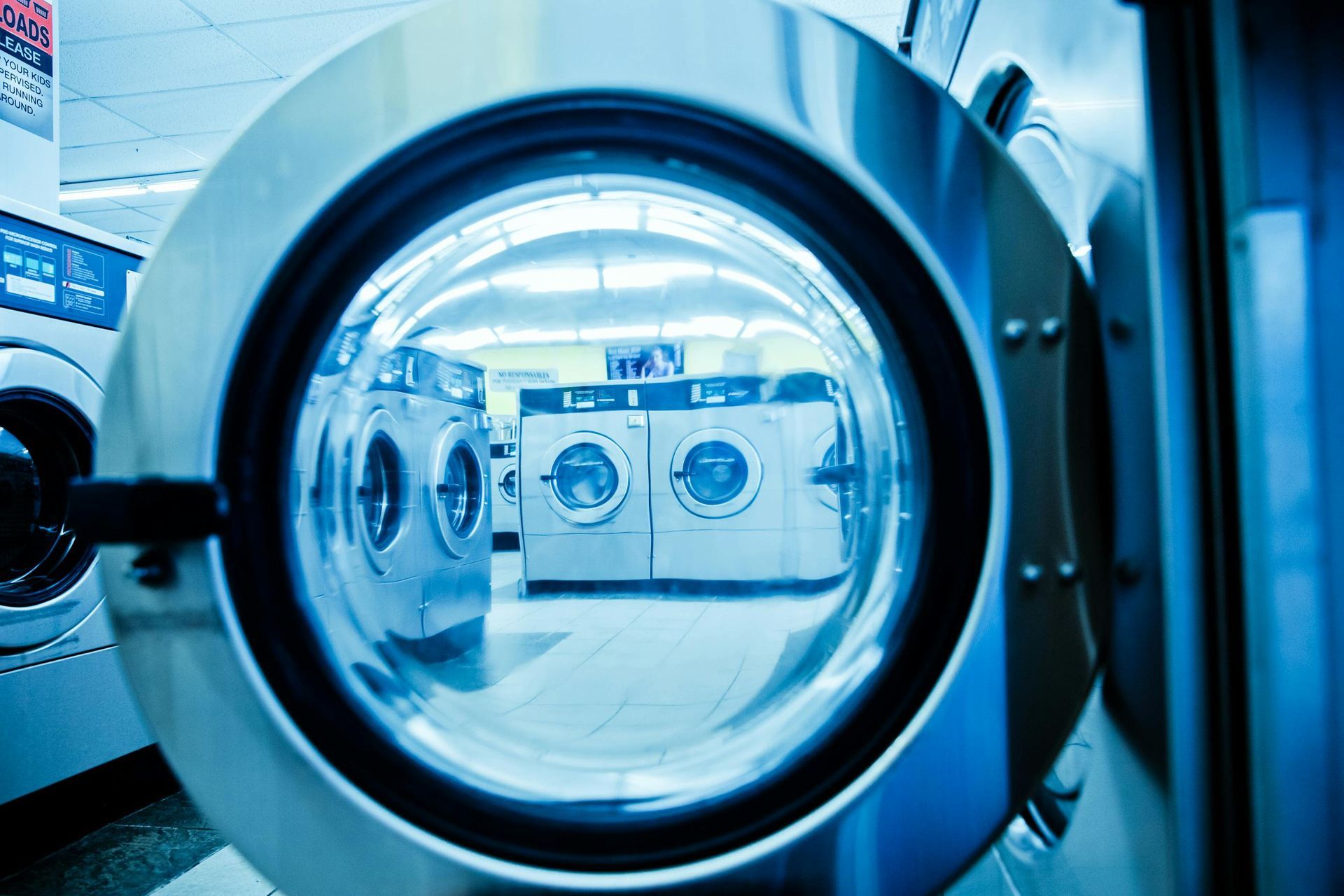How to Stop an Overflowing Toilet

This is what nightmares are made of: you walk into your bathroom to find a new water feature flowing–one that you didn’t install. Your toilet bowl is overflowing! Is your first instinct to flush the toilet again? (Definitely don’t do that!) Would you simply call out for anyone else in your household to solve the issue? Do you know what to do when the panic of a wet floor and running water set in? If you’re unsure about those questions, here are simple steps to stop your toilet from overflowing and some information about what may have caused your issue.
Stop more water from entering the bowl.
Water enters your toilet bowl from two places: the primary source, covered by a flapper or stopper, and the fill valve. You can find both of these places in the tank of your toilet, so step one is to remove the lid of your toilet tank carefully and set it down in a safe place. Once you have done that, you can move on to the next steps.
- Close the flapper valve inside the toilet tank.
Locate the flapper valve. This is a rubber piece in the bottom center of your tank attached to a chain. When you push it down, it should stop more water from flowing into the bowl. Since this is the primary water source entering the bowl, this step should take care of most of the issue.
- Disconnect the fill tube or lift up the float.
Though you have already taken care of the main water supply, the fill valve is a secondary source you’ll need to stop. When you flush your tank, the water from the supply line fills the tank and the bowl simultaneously. This is done by utilizing a fill tube that sends water down the overflow valve. Water continues flowing until the float in your tank reaches a certain level. Your float may look like a ball or a cup, depending on your system type. The float determines how much water should enter the tank. When the float reaches the maximum height, it signals that the tank is full and causes the water supply to shut off.
One way to stop water from flowing into the bowl is to simply disconnect the fill tube that sends water down the overflow valve. You can pull this line out gently and allow it to fill the tank instead of down the overflow valve.
Another way to stop water from flowing into the bowl is to use something to prop up the float in the tank. You can “trick” your system into thinking the toilet is full this way. You can use anything small enough to sneak under the rod to accomplish this.
- Turn off the water supply to the toilet.
Another way to ensure no more water enters the bowl is to turn off the water supply. A tube connected to the wall is located at the back of the toilet. On that tube, there should be a silver football-shaped knob. This knob turns the water supply to your toilet on and off. Turn the knob counterclockwise to stop any additional water from flowing to the toilet.
Whew! Now that the water has stopped pouring, what now?
Once your toilet is no longer overflowing, grab a mop and clean up any excess water in your bathroom. Do not attempt to flush the toilet again until you have fixed the problem.
The next step is removing the clog causing the toilet or drain to back up. Try to use a plunger and see if you can remove any blockages from the drain. Remember: create an airtight seal when using the plunger. Plunge up and down for 10 to 20 seconds each time. If you are having trouble getting the clog out on your own and live in the Birmingham, AL, area, give us a call at All City Plumbers! We will send a professional to your home to solve the issue quickly and cleanly. We offer 24-hour emergency plumbing service, and our trained and experienced plumbing team guarantees to get the job done.
Hopefully, this is a rare issue with your bathroom. However, if your toilet is repeatedly overflowing, check out our guide to what may be happening here.
What caused my toilet to overflow?
To answer this question confidently, we suggest hiring a plumbing professional to investigate and assist with your toilet needs. However, the most common cause of an overflowing toilet is drain and pipe clogging. Drains and pipes can be clogged when non-flushable items are flushed down the toilet. Non-flushable items can include sanitary napkins, diapers, paper towels, wipes, and many other things. A toilet can also be blocked if too much toilet paper is flushed at one time, particularly in cases where the toilet has a septic tank. These blockages can often be solved with a plunger but in some cases, may require the help of a professional plumbing service.
Overflowing toilets may also be caused by a toilet malfunction. If your float has malfunctioned, that could cause the water to continue flowing into the bowl and causing an overflow. These malfunctions, specifically ones with the tank flapper or float, can typically be fixed by going to your local hardware store and replacing the parts.
Sometimes, the reason for your overflowing toilet can be more sinister, like tree roots growing in your sewer line. These situations are easier to handle when you enlist the help of a professional plumbing service. All City Plumbers in Birmingham, AL, offers emergency, commercial, and residential plumbing services. Get in touch with us to learn more about our services.











